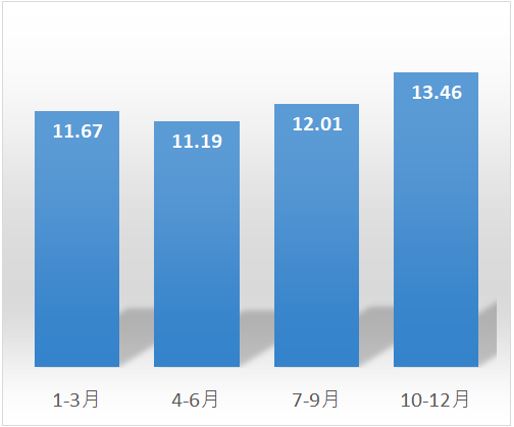A research team led by Associate Professor Hiroshi Yokomichi of the Japan Eco & Child Study Koshin Unit Center at the University of Yamanashi analyzed data from the Eco & Child Study (national survey on children's health and the environment) targeting approximately 100,000 children. They investigated the relationship between a child's birth month and the incidence of atopic dermatitis and found that it was the highest in children born in the autumn to winter period, especially between October and December. In contrast, it was low in children born between April and June. When the association with the incidence was analyzed using sunshine duration and humidity data provided by the Japan Meteorological Agency, these weather conditions were not found to be associated with the onset of atopic dermatitis. Their findings were published in BMJ Open.
Studies in countries in the Northern Hemisphere outside of Japan have reported that children born in the fall or winter are more likely to have atopic dermatitis. However, few studies have investigated the environmental risk factors for atopic dermatitis in a large Japanese population. In this analysis, the researchers used data from the Eco-chill survey of about 100,000 children to investigate the cumulative prevalence of atopic dermatitis from 6 months old (separated based on birth month) to the age of 3 years. They found that the cumulative prevalence of atopic dermatitis was 11.67% for children born between January and March, 11.19% for children born between April and June, 12.01% for children born between July and September, and 13.46% for children born between October and December. The incidence of children born between October and December was the highest, at 1.2 times that of children born between April and June, which showed the lowest incidence.

Credit: Yamanashi University
Another major risk factor was a maternal history of allergic disease. This increased the incidence of atopic dermatitis in children by 1.69-fold, more than the father's history of allergic disease, which was 1.18-fold. Differences in the incidence of atopic dermatitis depending on the month of birth appeared at about 6 months after birth, and this remained almost unchanged until the age of 3 years. This means that the high incidence of atopic dermatitis among children born between October and December will continue from 6 months to 3 years of age.
Decreased skin barrier function and itching are the cause atopic dermatitis. To follow up on this the group also used data from the Japan Meteorological Agency, and analyzed the relationship between the sunshine duration and humidity of children's birthplace during the first 6 months of life and the incidence of atopic dermatitis. However, no scientific link was found between them. It is necessary to examine other data to investigate the environmental factors that lead to these effects.
This article has been translated by JST with permission from The Science News Ltd.(https://sci-news.co.jp/). Unauthorized reproduction of the article and photographs is prohibited.




